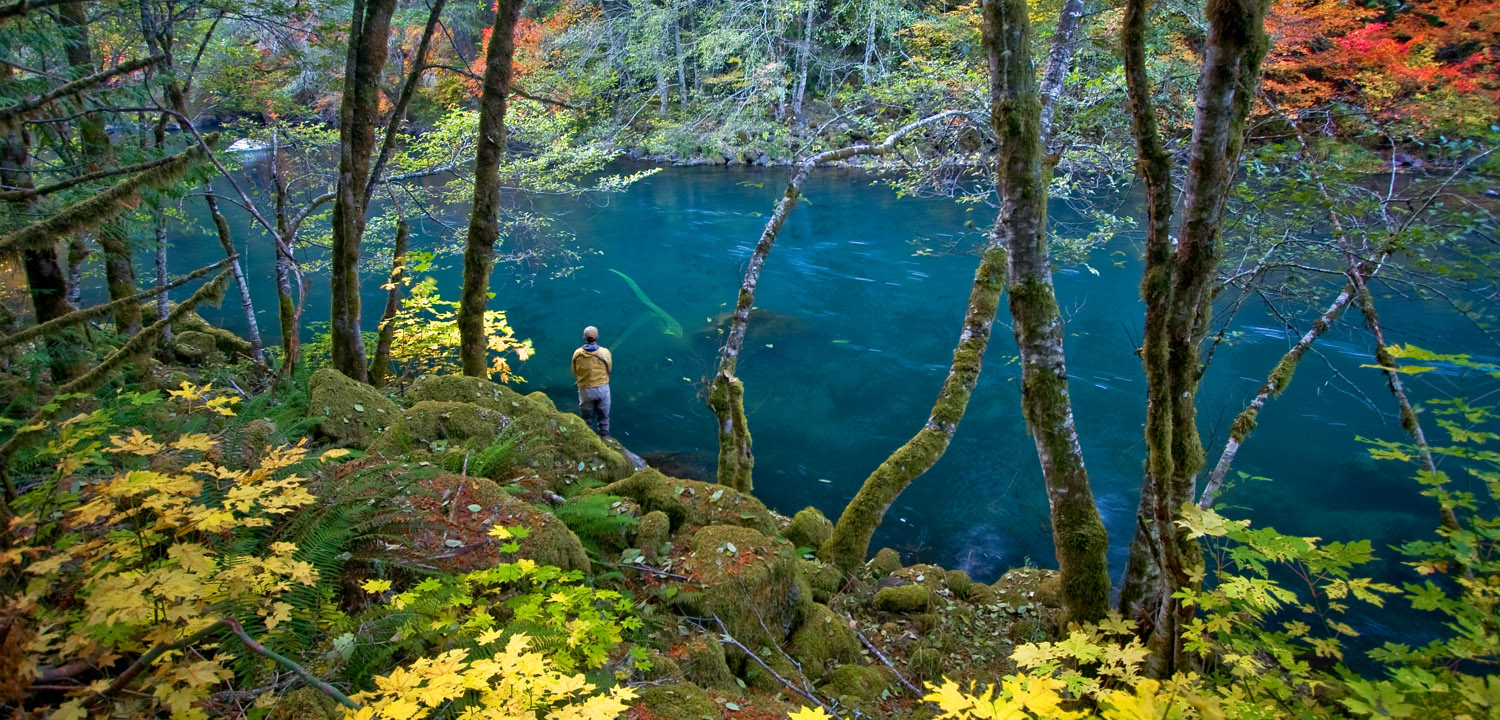The following is an introduction to the Wild Salmon Center 2015 Annual Report.
From the President

Each spring, just after the long winter rains have ended and before the onset of summer, I pack my boat, flyrods and boxes of bright green flies and head to the Oregon Coast to fish for spring Chinook salmon. The spring salmon arrive early, five months before they spawn.
They are fat, loaded with energy for the swim upriver to cool headwater pools, and they are very hard to land on light tackle.
But for the last two springs I have noticed an alarming trend while chasing springers. The rivers are warming early, and agricultural runoff is causing algae blooms that turn normally clear estuaries into pea soup. As I write this, on June 6th, the water temperature in the Tillamook Bay has reached 68 degrees. By July it could be in the 70s and prove lethal to the spring Chinook and summer steelhead that are gathering to make their upstream migration.
Is this the new normal? Scientists aren’t sure. The persistent high pressure ridge that blocked the Pacific Northwest’s normal diet of lifesaving clouds and rains in 2015 and the vast, warm and stagnant “blob” of ocean water that appeared offshore starting in 2014 were a combination nobody had seen before. But climatologists and fisheries experts do predict hotter, drier summers, warmer, wetter winters, and an ocean environment increasingly hostile to salmon and steelhead smolts arriving in the spring of each year.
What then can we do to ensure the survival of wild salmon and steelhead and all the species they support?
How do we protect those beautiful places that sustain us, thrill us, and define us in the face of change?
We must “anchor” salmonid biodiversity in each region by protecting river systems that have cool water and reliable instream flow, high habitat quantity and complexity to withstand weather shocks to watersheds, and a rich diversity of salmon, trout, and steelhead populations that can adapt to a changing environment.
We’re focusing our work on those three fronts – cool water, habitat complexity, and fish diversity. In Washington, we’ve started a new campaign to reconnect coastal rivers to cold, spring-fed tributaries and in Oregon, we doubled the width of forested stream buffers on 2,500 miles of coastal rivers to better shade streams in summer. On Russia’s Kol River, we have spent a decade and a half working for permanent, whole-river protection for one of the Pacific’s most biologically productive wild salmon streams. (See page 22 of the report for good news on the Kol). And on the Oregon Coast, we’ve worked with Oregon Department of Fish and Wildlife to prioritize the protection of wild fish stocks on 25 coastal river basins and sub basins.
Just like any investor builds a diverse portfolio that can survive boom and bust business cycles, we are building a portfolio of salmon strongholds – from Russia to California – that will be resilient enough to survive environmental challenges over the next 20 years.
The world is changing, but we’re adapting to it. If we’re strategic, we can save the salmon rivers we want to give to our children. Thank you for helping us.
Guido Rahr
President and Chief Executive
